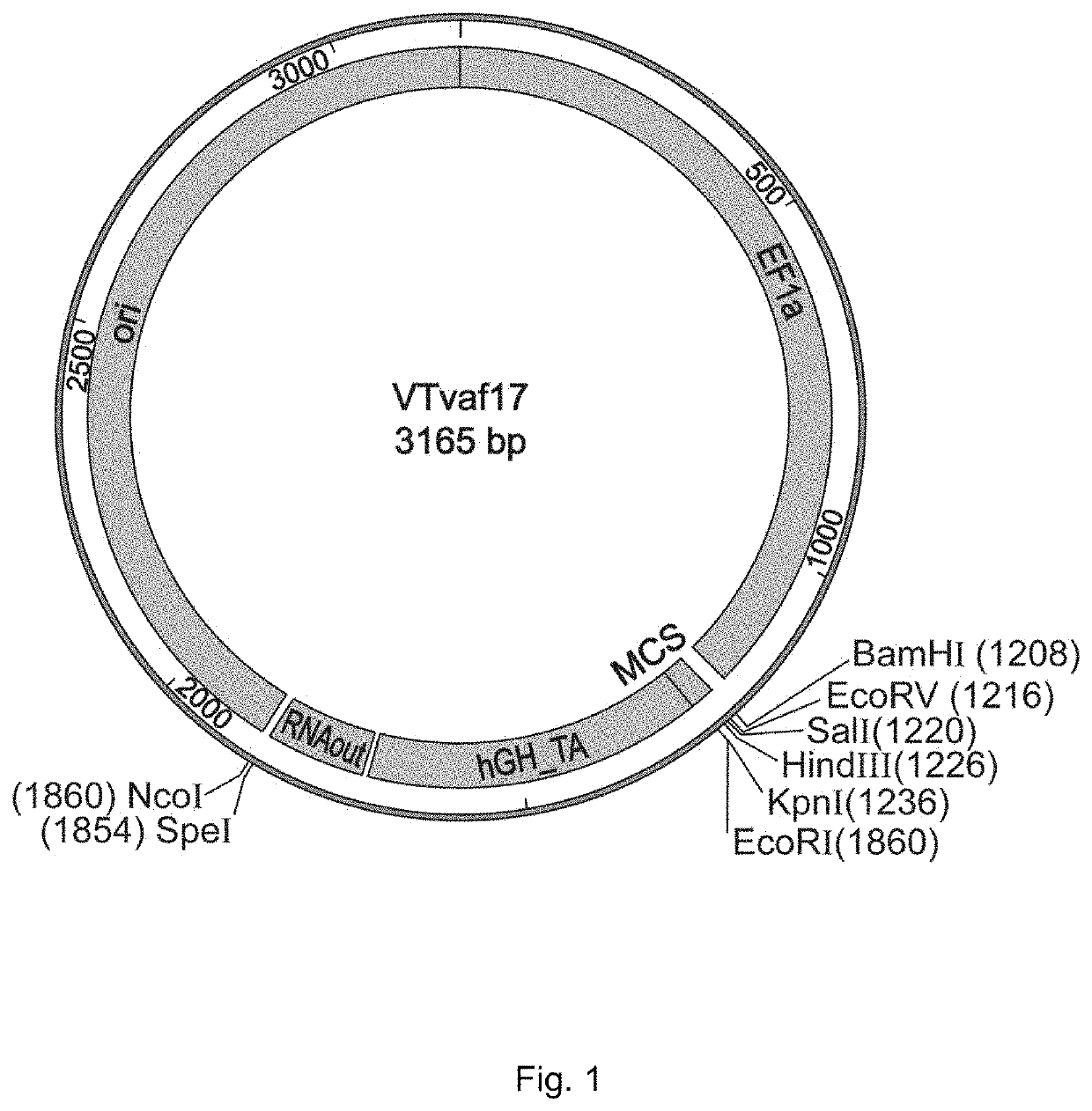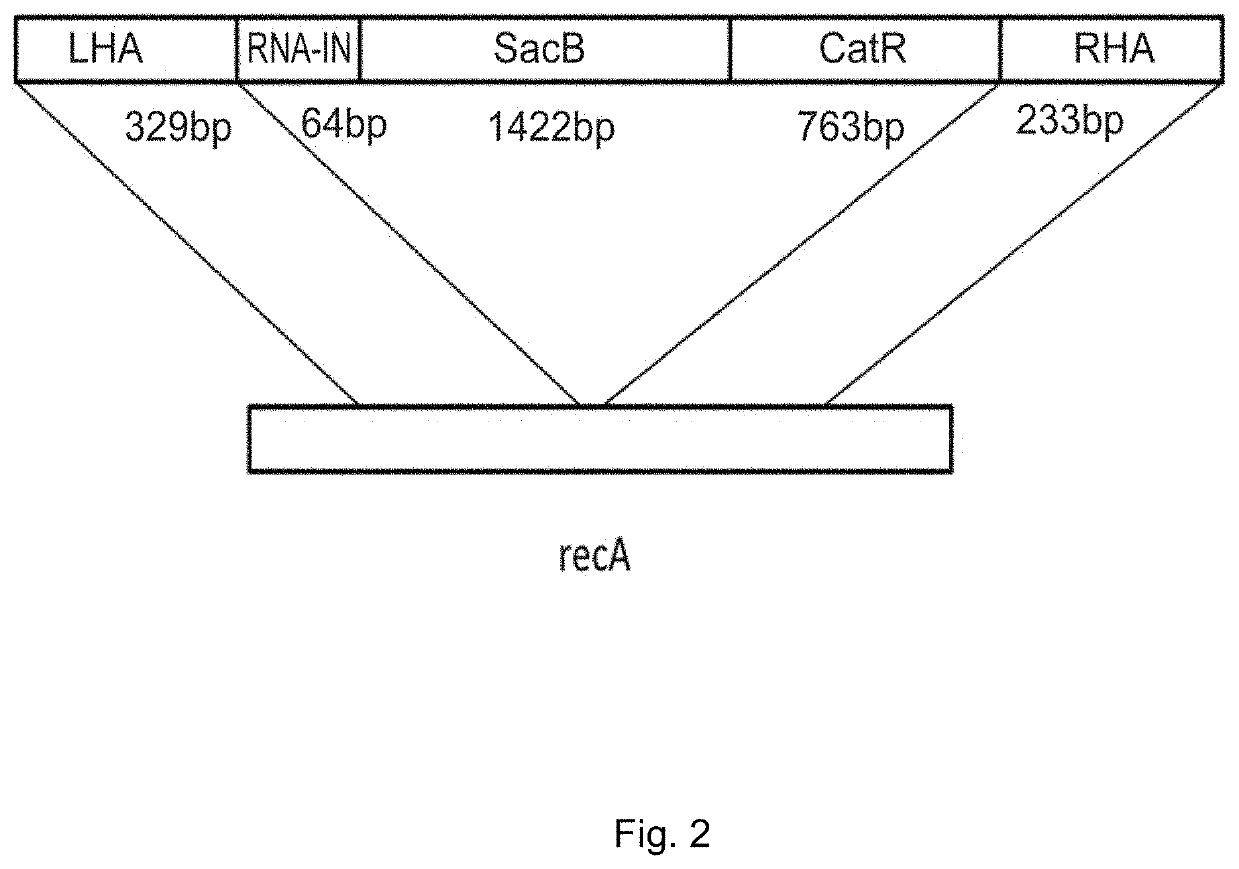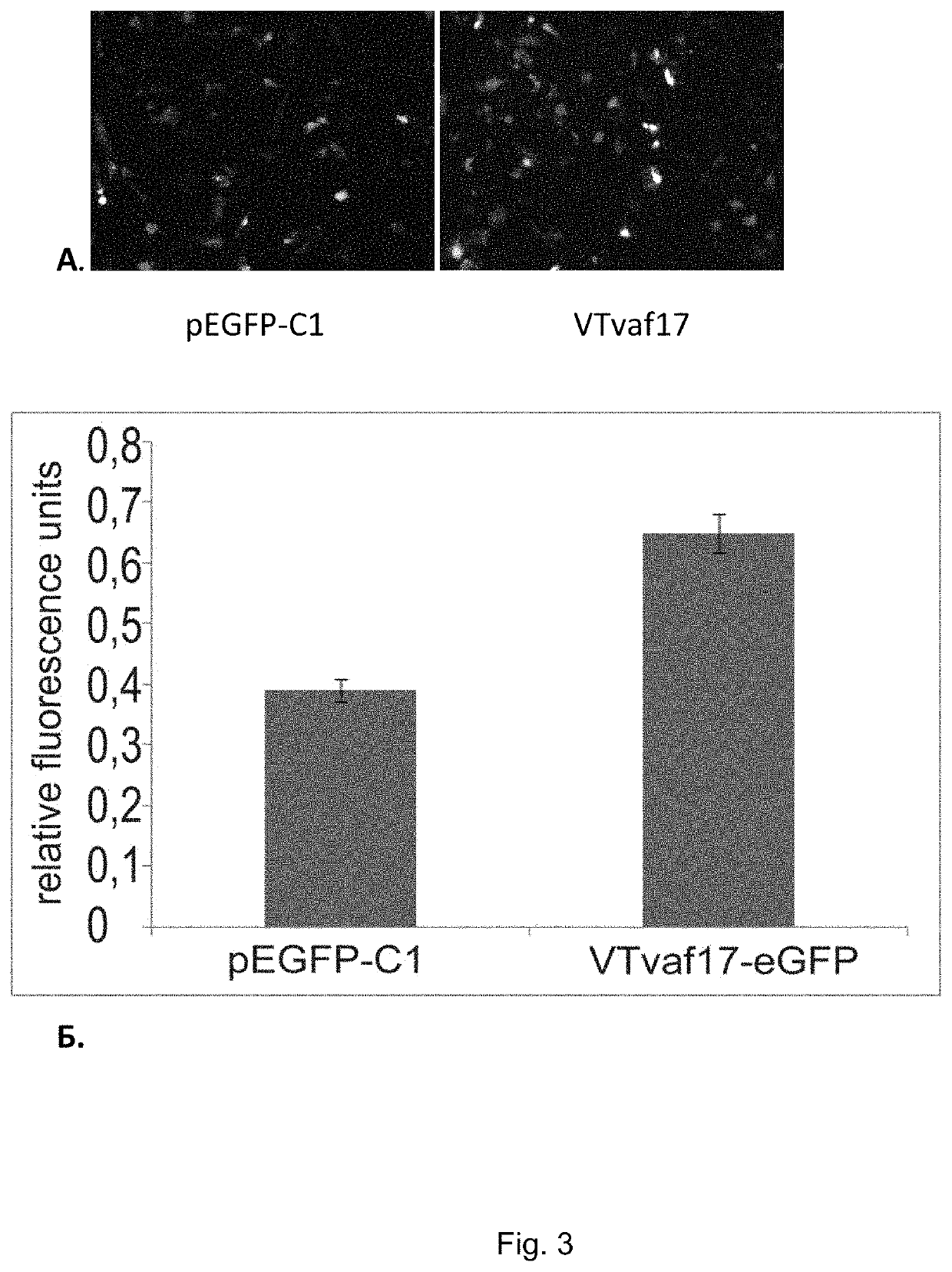GENE THERAPY DNA VECTOR VTvaf17, METHOD OF PRODUCTION; ESCHERICHIA COLI STRAIN SCS110-AF, METHOD OF PRODUCTION; ESCHERICHIA COLI STRAIN SCS110-AF/VTvaf17 BEARING GENE THERAPY DNA VECTOR VTvaf17, METHOD OF PRODUCTION
a technology of escherichia coli and dna vector, which is applied in the field of gene therapy dna vector vtvaf17, which can solve the problems of lack of selectivity, manufacturing challenges, and limitations of the use of viral delivery systems, and achieves the effects of improving the safety and safety of use, reducing the risk of cancer, and improving the safety of us
- Summary
- Abstract
- Description
- Claims
- Application Information
AI Technical Summary
Benefits of technology
Problems solved by technology
Method used
Image
Examples
example 1
[0044]Production of gene therapy DNA vector VTvaf17 containing the promoter of human elongation factor gene EF1A with an intrinsic enhancer, a polylinker, a transcription terminator and a polyadenylation sequence of the human growth factor, regulatory element RNA-OUT of transposon Tn10, and an origin of replication with a single nucleotide substitution to increase plasmid production.
[0045]Gene therapy DNA vector VTvaf17 was constructed by consolidating six fragments of DNA derived from different sources:
[0046](a) the origin of replication was produced by PCR amplification of a region of commercially available plasmid pBR322 with a point mutation using oligonucleotides Ori-F, Ori-R, Ori-M1, and Ori-M2 (List of Sequences, (1)-(4));
[0047](b) the promoter region EF1a was produced by PCR amplification of a site of human genomic DNA using oligonucleotides EF1-F and EF1-R (List of Sequences, (5) and (6));
[0048](c) the transcription terminator hGH-TA was produced by PCR amplification of a s...
example 2
[0053]To prove the efficiency of DNA vector VTvaf17, the target gene, e.g. the green fluorescent protein (GFP) gene, was cloned to the polylinker.
[0054]Production of gene therapy DNA vector VTvaf17-eGFP carrying a site coding the target gene, e.g. the gene coding green fluorescent protein (GFP). The coding region of the green fluorescent protein gene was produced by PCR amplification of commercially available plasmid pEGFP-C1 (Clontech) using oligonucleotides MVGFP-F and MVGFP-R (List of Sequences, (30) and (31)). The produced PCR fragment was cleaved by restriction endonucleases BamHI and EcoRI, and ligated with a 4182-bp DNA vector carrying the kanamycin resistance gene and cleaved by the same enzymes. Further on, the kanamycin resistance gene was removed from the vector produced, as described in Example 1. This resulted in a 3874-bp DNA vector VTvaf17-eGFP allowing for antibiotic-free selection.
example 3
[0055]To prove the efficiency of DNA vector VTvaf17, the target gene, e.g. the human elastin encoding gene, was cloned to the polylinker.
[0056]Production of DNA vector VTvaf17-ELN carrying a region coding the target gene, e.g. the human elastin encoding gene. The 2175-bp long coding region of the elastin gene (SEQ ID No. 2) was produced by extracting total RNA from the patient's skin biopsy sample with subsequent reverse transcription and PCR amplification. The material was sampled from intact skin in area of the forearm, using the skin biopsy device Epitheasy 3.5 (Medax SRL). The patient's skin was preliminarily rinsed with sterile saline and anaesthetized with a lidocaine solution. The size of the biopsy sample was ca. 2×2×2 mm, and the weight was up to 20 mg. The sample was placed in 1 ml of Trizol Reagent (ThermoFisher Scientific), homogenized and heated for 5 minutes at 65° C. The sample was centrifuged at 14 000 g for 10 minutes and heated again for 10 minutes at 65° C. Then 2...
PUM
| Property | Measurement | Unit |
|---|---|---|
| Fraction | aaaaa | aaaaa |
| Density | aaaaa | aaaaa |
Abstract
Description
Claims
Application Information
 Login to View More
Login to View More - R&D
- Intellectual Property
- Life Sciences
- Materials
- Tech Scout
- Unparalleled Data Quality
- Higher Quality Content
- 60% Fewer Hallucinations
Browse by: Latest US Patents, China's latest patents, Technical Efficacy Thesaurus, Application Domain, Technology Topic, Popular Technical Reports.
© 2025 PatSnap. All rights reserved.Legal|Privacy policy|Modern Slavery Act Transparency Statement|Sitemap|About US| Contact US: help@patsnap.com



